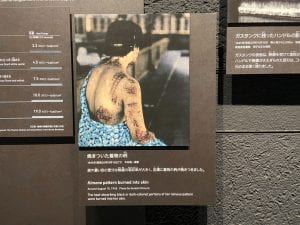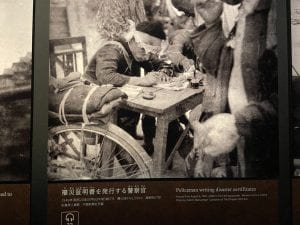The school beneath the wave
Introduction
On the seventeenth day of our study abroad program in Japan, we visited Okawa primary school, also known as “the school beneath the Wave.” Due to insufficient evacuation procedures, just 3 pupils and 1 teacher from this elementary school survived the tsunami wave, leaving 74 students and 10 teachers dead. A mother who had lost her own child, a high school student who had been waiting for her at home during the tsunami, explained in detail what had occurred in Okawa to cause so many deaths to us on this trip.
Destruction
We had the opportunity to witness the tsunami’s devastation with our tour guide. We could make out the traces it left on the bricks. Our tour guide and storyteller showed us before and after photos, demonstrating how the wall and walkway fell. She also detailed a lot of the events that occurred during the 51 minutes that the school had to be evacuated, during which time there were arguments about where to go and what to do. She also mentioned a teacher who was the only teacher to survive, went up to the mountains to see if they could flee there since he was the only one who insisted on it while the other teachers were hesitant to because of the previous earthquake danger.
Less than 1 minute.
Okawa Elementary had 51 minutes to flee in total. The guard, who was instructed to drive and observe what was happening, returned and with only fifteen minutes left advised people to leave since a tsunami was on its way. The teachers continued talking until one minute remained, at which point they began the evacuation procedure and instructed the children to head for the river. They had no idea that there were two tsunamis approaching from opposite directions. One came from a river, and the other came from the ocean (which was the one the guard saw). They utterly overlooked the opportunity to climb the hill close to the school. Everyone in the group was moved to tears during the trip when our guide revealed that a test had been done to determine how quickly an elementary school student could climb the hill’s upward slope. It wouldn’t have taken them more than a minute, especially with the added adrenaline of panic speeding you up. We climbed the mountain and took in the scenery, but we can only speculate as to what the survivors saw as they watched their former home be completely destroyed with their friends’ and teachers’ screams for help.
Full Poem translated: https://en.wikipedia.org/wiki/Ame_ni_mo_makezu
“Amenimo makezu”. “Be not defeated by the rain”. A poem, by Kenji Miyazawa, was written on the side of the building in the playground. Something that will bring tears to your eyes when comparing the context to the sorrow brought to Okawa Elementary School.










